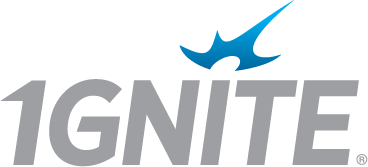5 Best Solutions for Restaurant Facility Managers To Reduce Costs
IMMEDIATE SAVINGS WITH ZERO CAPITAL INVESTMENTOver the last 2 years, restaurant facility managers have been challenged to reduce costs and adapt to lasting changes being made to the way people dine out. Facilities managers are often right in the middle of these trending changes, almost always being asked to do more with less. Saving money is paramount on almost everyone’s list of things to do – so here are 5 ways that restaurant facility managers can use to reduce costs immediately, without any capital investment.
# 1 Restaurant Facility Manager Solution to Reduce Costs: Focus on Preventive Maintenance
Just like you wouldn’t wait for the engine in your car to break down before you changed your oil, there is no reason to wait for critical equipment to break down before you serve it. A comprehensive preventative maintenance program requires planning, data collection, and discipline – but they can save your locations big money. Any good preventative maintenance program consists of 4 key action items:
- Inspection:
Regular inspections of your equipment ensure that it is functioning properly and safely, but you also need to regularly inspect the facility for things like cracks in concrete, leaks, or other signs that something is wrong.
- Detection:
Using sensors and a facility management software solution, many issues can be detected ahead of time by setting proper alarms and thresholds.
- Correction:
Fix any issues you find and most importantly: document everything. The make, model, year, and parts replaced can all become important data to make decisions in the future.
- Prevention:
When you’ve collected data about the repairs you’ve made, you can start to identify trends, which is what makes data collection so important. This data can be used to then set inspection scheduling, maintenance schedules, and part replacement time frames.
#2 Standardize Job Requirements To Reduce Costs
One simple, cost-free lever you can use to reduce costs is to create key metrics and standards for every job you need to be done. Creating standards that are applied to all corporate-owned facilities & carried over to the franchised locations prevents overspending for jobs that are universal across all your facilities.
While no two jobs are the same, we recommend going through your historical work order history and using the information to create logical categories of services along with service completion parameters. Elements to include in framing the categories of services can include broad descriptions of the scope of work, time on site, type of equipment needed, how soon a crew needs to be dispatched, the type of communication needed, and a not-to-exceed price. This will not only help you assign work to vendors who are best suited for a particular project but also ensure the vendors you work with give you accurate quotes. Being able to correctly frame the scope of a project before it starts prevents costs from escalating and timelines from extending.
Once you have standardized your jobs, you need to find the appropriate vendors. It is important to outsource to vendors that are qualified for the tasks, but not overqualified. An emergency cleaning company is going to charge higher rates than necessary if you only need a scheduled cleanout. No matter which vendors you use, you need to be able to communicate seamlessly with them to prevent unnecessary downtime.
#3 Restaurant Facility Managers Can Manage Vendors Efficiently
On the best of days, a facility manager’s job can feel like running from one fire to the next trying to stay ahead of the next problem. With outside influences like supply chain issues and natural disasters added into the mix, Facility Managers can quickly find themselves overwhelmed. To handle not only the volatile day-to-day situations, as well as disaster recovery situations, but many are also turning to outsourcing and increasing the number of vendors available to help cover their bases more effectively.
When outsourcing, an important factor to consider is to find a reliable vendor that is accountable for handling a block of related services and that can make properly informed recommendations to help streamline operations. Facility Managers have the find the right balance between managing a complex network of specialty vendors who will provide great prices and concentrating a broad block of work in the hands of a few vendors, which is simpler but can become excessively expensive. For example, while it does not make sense to use highly qualified technicians for labor work, there are benefits to working with a company that can handle both non-emergency and emergency situations gives you a single point of contact for all your projects, makes for easier billing, and saves you time by not having to manage multiple companies for multiple locations. Not all vendors are created equally – so take your time and use this resource to start your research. Just like the right vendor can mean great success, the wrong vendor is just going to create more issues.
#4 Use Technology to Drive Change, Reduce Costs and Get visibility to Make Intelligent Decisions
In the world of facilities management, installing IoT sensors everywhere you can and relying on extensive facility management software are wonderful tools to capture accurate information in real-time and make informed decisions. However, both require a substantial investment, a complex and lengthy deployment process and require extensive training from your entire team. While this remains the best option today, you can start by utilizing the technology used by your vendors to create metrics and reports that help you measure what is important to run your business.
#5 Restaurant Facility Managers Can Easily Establish an Inventory of Assets
Facility Managers need to get complete visibility into what they have, where, the condition, make, and models of internal assets so they can make the proper repair/replacement decisions. Restaurants use a lot of specialized equipment, and all of that equipment has value, so make sure you’re not leaving money on the table by just throwing out used assets.
The creation of an internal marketplace can also help you get the most out of your internal assets. Instead of replacing broken units with new stock that might be delayed due to supply chain issues, you can keep your restaurants running with used assets from other locations. This gives you more control over assets that are critical to your operation and ensures that the equipment is used to its fullest potential.
At 1GNITE we specialize in supporting Restaurants Facility Managers in every aspect of their job. We have experience managing projects for thousands of locations and are here to help you navigate these tricky times and reduce costs. Contact us today and put us to work for you.
-
Liquidation: How Retailers Retain Value for Planned and Unplanned Events
-
3 Easy Steps To Align Emergency Liquidation and Recycling
-
Liquidation company: how to pick the right one
-
4 Proven Steps to Successfully Implement an Internal Marketplace
-
5 Benefits of an Internal Marketplace You Must Know
-
The Top 5 2022 Trends in Facility Management: How To Make Them Work To Your Advantage











